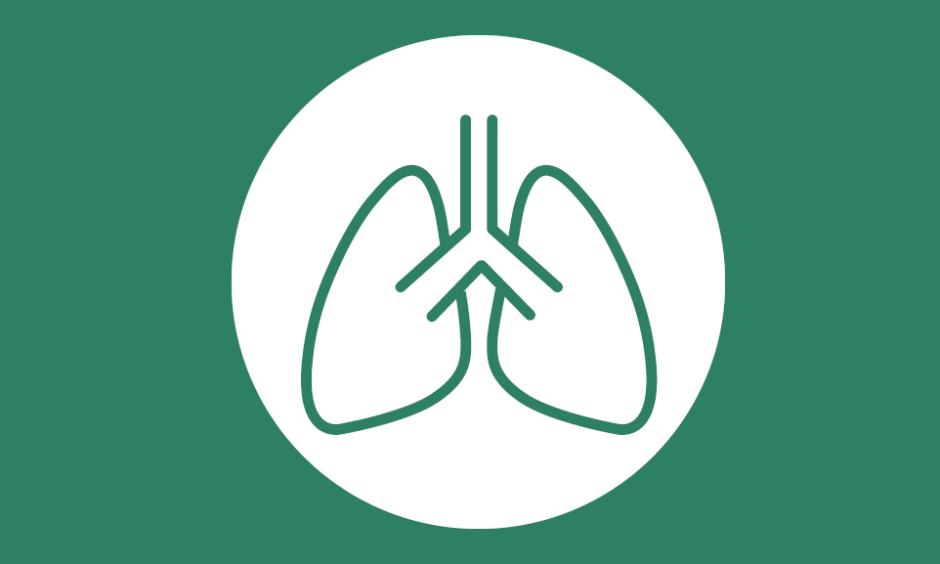Abstract
Chronic obstructive pulmonary disease (COPD) is a multifactorial lung inflammatory disease that affects 174 million people worldwide, with a recently reported increased incidence in female patients. Patients with COPD are especially vulnerable to the detrimental effects of environmental exposures, especially from air particulate and gaseous pollutants; exposure to air pollution severely influences COPD outcomes, resulting in acute exacerbations, hospitalisations, and death. Here, a literature review of the recent work addressing air pollution-induced acute exacerbations of COPD (AECOPD) was conducted in order to determine whether sex was considered as a biological variable in these studies, and whether air pollution exposure affected patients with COPD in a sex-specific manner. It was found that, while the majority of studies enrolled both male and female patients, only a few reported results were disaggregated by sex. Most studies had a higher enrolment of male patients, only four compared AECOPD outcomes between sexes, and only one study identified sex differences in AECOPD, with females displaying higher rates. Overall, this analysis of the literature confirmed that air pollution exposure is a trigger for AECOPD hospitalisations and revealed a significant gap in the knowledge of sex-specific effects of air pollutants on COPD outcomes, highlighting the need for more studies to consider sex as a biological variable.
INTRODUCTION
Chronic obstructive pulmonary disease (COPD) is a lung inflammatory disease that includes emphysema and chronic bronchitis, and is characterised by airflow blockage in the lungs.1 A growing number of studies have recently reported sex differences in the disease pathophysiology and on its incidence. In addition, there is a substantial body of evidence from clinical and experimental studies alluding to the effects of endogenous sex factors on lung function and disease. According to mouse models, female hormones and their metabolites can trigger lung inflammatory reactions, and male hormones usually play the opposite role. Thus, the impact of air pollution as a trigger of exacerbations and the independent response of the respiratory system is an area that research efforts need to focus on.2 However, very little information on the effects of air pollution exposure on male and female patients with COPD is available, particularly in acute exacerbations of COPD (AECOPD) and its related outcomes, as most studies conducted in this area have not taken the variable of sex into account. As differences in the sex of patients with AECOPD is under-studied, the association between exposure to gaseous and particulate pollutants and hospitalisations for COPD exacerbations was investigated in this present review, paying particular attention to the differences between males and females. The authors focused on the association of daily mean concentrations of particulate matter (PM) with an aerodynamic diameter of <10 μm (PM10) and of <2.5 μm (PM2.5), as well as other gaseous pollutants (ozone [O3], carbon monoxide [CO], nitrogen dioxide [NO2], sulfur dioxide [SO2]) with hospital admissions, based on daily measurements reported in each study, while analysing the sex variable.
COPD PATHOGENESIS
The pathogenesis of COPD includes proteinase–antiproteinase imbalance, immunological mechanisms, oxidant–antioxidant balance, systemic inflammation, apoptosis, ineffective repair, and an accelerated decline in forced expiratory volume in 1 second and forced vital capacity.1 The diagnosis of COPD is also determined on the basis of symptoms and signs (e.g., exertional breathlessness, chronic cough, regular sputum production, frequent bronchitis, wheeze, etc.) in people >35 years of age who have a risk factor (e.g., smoking history), although these clinical findings have to be supported by spirometry, as defined by the Global Initiative for Chronic Obstructive Lung Disease (GOLD) and National Institute for Health and Care Excellence (NICE) standards.3,4
The development of COPD is multifactorial, and the risk factors for this disease include genetic, environmental, and sex and gender factors.5 Among the sex (biological) factors are chromosomes, sex organs, and endogenous hormones, which differ between males and females. The gender factors, on the other hand, refer to socially constructed roles and behaviours that depend on cultural context and identity.6,7 Female sex and gender have been independently associated with COPD development due to the differential susceptibility of the lung-damaging effects of cigarette smoking, interactions of female hormones with toxins present in tobacco products, and other factors such as exposure to household air pollution and environmental triggers.6,8 While cigarette smoke is the most critical risk factor associated with COPD, occupational and other environmental exposures are known to cause approximately one in six cases.9
COPD exacerbations generally include an acute change in the frequency and severity of cough, increases in volume and changes in the character of sputum, and worsening dyspnoea beyond normal day-to-day variations, leading to an increase in medication usage.4 Hospitalisations for COPD exacerbations are multifactorial. Common triggers include respiratory infections, poor outdoor air quality, or both. Among patients with COPD, it has been reported that 70% of cases of AECOPD are due to respiratory infections, viral or bacterial, and 30% are due to environmental pollution and other causes.10 In addition, hospitalisation frequency varies with disease severity, the patient’s age, history of antibiotic use, and the presence of one or more comorbidities.
COPD EPIDEMIOLOGY
COPD affects approximately 17.4 million people (7.3 million males versus 10.1 million females) in the USA, and an estimated 174 million (104.3 million males versus 69.7 million females) worldwide. It is the fourth leading cause of death and the fourth leading cause of chronic disease-related morbidity and mortality, accounting for >120,000 deaths in the USA and 3.2 million deaths globally every year.11,12 Several research studies have suggested that outdoor air pollution exposure is linked to the prevalence and incidence of COPD.
Between 1971 and 2000, the prevalence of COPD among females significantly increased from 50.8 to 58.2 per 1,000 people, while in the same time period, the prevalence in males decreased from 108.1 to 74.3 per 1,000 people.13 More recent data have indicated that the prevalence of COPD was higher among females than males between 1998 and 2009.9 Since the year 2000, the number of females dying from COPD has also surpassed the number of males.14 These trends are partially explained by the higher susceptibility of females to the negative effects of smoking, which results in the earlier development of severe forms of this disease, as well as changes that have occurred over time as cultural and societal expectations for females have evolved, such as the rates of tobacco use, environmental and occupational exposures, and bias in disease diagnosis.15,16
AIR QUALITY AS A RISK FACTOR FOR COPD EXACERBATIONS
Air pollution exposure is estimated to contribute to approximately 7 million early deaths worldwide every year, and to >3% of disability-adjusted life years lost.17 Air pollution has numerous harmful effects on health and contributes to the development and morbidity of cardiovascular disease, metabolic disorders, and a number of lung pathologies, including asthma and COPD.18
Recently, it has been found that the number of patients with COPD who do not have a history of smoking is higher than expected,19 particularly for females.20 Emerging data indicate that air pollution exposure alters epigenetic markers, such as DNA methylation, and that these changes influence the expression of genes that control inflammation, disease development, and exacerbation risk. Exposure to several traffic-related air pollution components, including PM, black smoke, O3, nitrogen oxides, and polyaromatic hydrocarbons, has been associated with changes in DNA methylation in lung tissue.21 Air pollution exposure can also stimulate pro-inflammatory immune responses, including the adaptive responses of type 2 and type 17 T-helper lymphocytes, and dysregulate anti-viral immune responses.22 The clinical effects of acute and chronic air pollution exposure, particularly the known association between elevated levels and exacerbations of asthma and COPD, are consistent with those identified in inflammatory and immunological mechanisms activated in the lung during disease processes. For example, short-term exposure to air PM, NO2, SO2, and CO can trigger a neutrophil-mediated airway inflammatory response, followed by increased clinical symptoms. The deposition of PM in the respiratory tract depends predominantly on the size of the particles, with larger particles depositing in the upper and larger airways and smaller particles penetrating deep into the alveolar spaces. Ineffective clearance of PM from the airways causes particle retention in the lung tissue, resulting in chronic inflammatory responses that may be pathogenically important in both the exacerbation and progression of lung disease.23
Globally, exposure to household indoor air pollution in females who do not smoke also occurs via the inhalation of combustion products from biomass fuels, including wood, charcoal, animal dung, and others used for cooking.24 Due to traditional gender roles, these exposures have significantly contributed to COPD morbidity and mortality in females.25 It is estimated that 50% of households worldwide (approximately 3 billion people) are exposed to smoke from biomass fuel combustion. These exposures contribute to about half of the deaths from COPD, of which 75% are females, in developing countries.24
COPD EXACERBATION TRIGGERS
Exacerbations of COPD are episodes of worsening of symptoms that lead to substantial morbidity and mortality.23 COPD exacerbations are associated with increased airway and systemic inflammation, and physiological changes, such as hyperinflation. These are triggered mainly by respiratory viruses and bacteria, which infect the lower airway and increase airway inflammation. Some patients are particularly susceptible to exacerbations and show a worse health status and faster disease progression than those who have infrequent exacerbations. The available literature indicates that COPD symptoms, but not lung function, are mainly associated with rises in air pollution levels. Of these, dyspnoea has been associated with PM10 with a 13% increase in odds for an interquartile range change in pollutant (95% confidence interval: 4–23%), and this association remained significant after adjustment for other pollutant exposures.26
The mechanisms of COPD exacerbations are complex. There is also significant heterogeneity among individuals with COPD, evident by the wide range of disease parameters, such as exacerbation, symptoms, response to treatment, rate of disease progression, and mortality, all of which refer are referred as COPD phenotypes.27 Although we still have much to learn, phenotyping COPD individuals is crucial to make proper prognostic and therapeutic decisions and achieve meaningful outcomes. While respiratory viruses (e.g., rhinoviruses) and bacteria play a major role in the causative aetiology of COPD, in some patients, non-infective environmental factors also contribute to the disease development. Data recently published from a large observational study identified a subset of patients with a phenotype of higher susceptibility to frequent exacerbations triggered by environmental exposures.28 Although >80% of exacerbations are managed on an outpatient basis; hospitalisation is all too common and associated with considerable health care costs and mortality. In this regard, non-invasive ventilation has greatly decreased the mortality rate for exacerbations that require ventilatory support. However, across the range of exacerbation severity, treatment failure and relapses are frequent.
Among individuals with COPD, exposure to outdoor air pollutants is associated with loss of lung function and increased respiratory symptoms, leading to exacerbations and increased mortality.29 Some studies suggest that temperature may modify the effect of air pollution exposure, although these results are not conclusive.30 For example, Yan et al.31 explored the environmental effect of two different geographical locations in China on COPD exacerbations (Beijing in the summer; Sanya in the winter). It was found that the poorer air quality index and higher temperatures in Beijing were associated with a lower forced expiratory volume in 1 second, higher dyspnoea, and a relative risk of exacerbations that was twice as high as that observed in patients in Sanya.31 The authors also reported that ambient air pollution was strongly associated with COPD exacerbations by triggering apoptosis in airway epithelial cells.31
Although adequate evidence for a direct relationship between ambient air pollution components and the development of COPD is lacking, higher mortality rates from respiratory and cardiovascular diseases have been reported among patients who have been exposed to air pollution for a long time.32,33 Several reports have also pointed out the possibility that AECOPD can be caused by short-term exposures to air pollutants, as well as second-hand tobacco smoke.6,34,35 Regarding sex differences in COPD exacerbations, the available literature indicates that outdoor air pollution affects both male and female patients, but non-smoker females are affected more frequently than males.36
AIR POLLUTANT ASSOCIATIONS WITH AECOPD
In the present study, the authors focused on the association of air pollution exposure and hospitalisations for COPD exacerbations with an emphasis on sex differences. Therefore, studies that included both male and female participants were selected, including those that did or did not analyse outcomes by sex. PubMed and Google Scholar were used to search for articles related to the focus of this study, especially articles that pooled results on a global scale, reported analytical pooled estimates, were written in English or had an English abstract, and studied the associations between air pollution and hospitalisation for COPD exacerbation, as well as the respiratory response to shorter-term exposure of air pollution. The literature search was limited to human epidemiological studies that described hospitalisation due to the acute exacerbation of COPD, as identified by the International Statistical Classification of Diseases, 10th Revision (ICD-10) codes J40–J44; described a diagnosis of COPD and presentation for treatment of AECOPD, as defined by increasing shortness of breath, worsening cough, or change in sputum production at presentation; were based on research data; were from adult patients (>18 years-old); and were published in English. Records were de-duplicated using the built-in mechanisms available from the library services at Indiana University Bloomington (Covidence software; Melbourne, Australia), with further de-duplications completed manually. Articles were then screened by their titles and abstracts for inclusion or exclusion; final selections were determined after a full reading of articles. Information on the association between daily mean concentrations of PM of PM10 or PM2.5, as well as other gaseous pollutants (O3, CO, NO2, and SO2), with hospital admissions was then extracted, analysing the sex variable, based on daily measurements reported in each study or other data that could be aggregated into daily mean values. The results are therefore presented as associations of 24-hour average air pollutant concentrations and daily hospital admissions for AECOPD.
The effects of air pollution exposure in 40 studies of patients with AECOPD are summarised in this review (Table 1).37-70 Overall, it was widely reported that increases in environmental particulate and gaseous pollution concentrations were associated with an increased risk of hospitalisation for AECOPD, regardless of geographical location, with varying effects dependent on the air quality composition, pollutant concentration, and time of exposure. It was found that all but one of these studies enrolled mostly male subjects, while some enrolled males exclusively, which was surprising considering that the incidence of COPD among females has increased over the past few decades.71 Potential factors that may contribute to this bias are the historically (although not current) higher incidence of tobacco use in males, occupational exposures, and the previously described gender bias in COPD diagnosis.5,72
Incremental increases in concentrations of PM2.5 and PM10 were significantly associated with an increased risk of hospitalisation with AECOPD,34,39 but also with stroke and myocardial infarction. However, the adverse influences of PM2.5 on these diseases were generally more robust than those of PM10.62 In the Mid-Atlantic states of the USA, PM2.5 exposure was associated with all COPD hospital admissions, with a relative risk increase of 1.83 for every 10 μg/m3 increase in PM2.5.39 In Central and Eastern Europe, increases in hospital admissions were reported as being 3.3% and 2.8% greater for those exposed to PM10 and PM2.5, respectively.54
When assessing the effects of gaseous air pollutants on AECOPD, it was found that SO2 increases of 10 μg/m3 were related to a 6% increase in hospital admissions for chronic bronchitis, with a 2-day lag (lag 2).40 Comparably, an independent study found that, when modelled jointly with other pollutants, only SO2 remained significantly associated with AECOPD (hazard ratio: 1.038), although the five pollutants assessed in this study were highly correlated (correlation coefficient: 0.89).54 In addition, short-term exposures to SO2 were associated with an increase in COPD exacerbation risk in a region with a relatively low air quality index (central Massachusetts, USA).35 Regarding NO2 and CO, both were significantly associated with AECOPD hospitalisations.69 The magnitude of effects expanded slightly with increasing days of exposure, with a relative risk of 1.11 and 1.08 for NO2 and CO, respectively, for a 7-day exposure average.69 Likewise, a study in South Korea found that each 10 μg/m3 increase in CO was associated with a 2% increase in the odds of admission for AECOPD.47
In multi-pollutant exposure models, significant associations between pollutant exposure and hospital admissions for COPD were found for all five air pollutants (SO2, NO2, O3, PM10, and PM2.5), with higher relative risks for admission for every 10 μg/m3 increase of SO2, NO2, O3, PM10, and PM2.5, at a length of lag days that ranged from lag 0 to a cumulative lag 0–5.35 PM10 and SO2 were associated with both acute and lagged effects on emergency department visits due to COPD.39 In addition, declines in attributable hospital admissions for AECOPD were associated with a reduction in concentrations of PM2.5, PM10, SO2, and O3.58
Finally, other environmental factors have been found to contribute to AECOPD. For example, in a study conducted in Serbia, the COPD-related emergency department admissions for all age groups were significantly associated with previous-day black smoke levels and lag 0–2 (1.60% and 2.26% increase per 10 μg/m3, respectively).44 Similarly, a study in Guangzhou, China, found that haze (at lag 1) and air pollution (NO2 at lag 5; SO2 at lag 3) combined presented more drastic effects on patients aged 19–64 years, especially for females.52 Increases in NO2 were associated with the highest risk of hospital admissions for total and respiratory diseases in both single- and multi-pollutant models, and a relative risk of 1.94 in admissions in the emergency department at lag 0 for patients with COPD.52
INFLUENCE OF SEX AND AGE IN AIR POLLUTION EFFECTS ON AECOPD
As indicated earlier, very few studies reported the sex of the study participants or presented results that were disaggregated by sex. In this literature search, the authors found that only 7 out of 40 studies reported sex-disaggregated data, accounting for a total of 426,630 hospital admissions for COPD.41-43,49,53,55,62 On average, there were approximately 409 admission counts per day, with males accounting for 72% (296 admissions) and females for 28% (113 admissions) of these. After adjusting for potential confounders, SO2,NO2,and O3 concentrations were found to be significantly associated with increases in AECOPD hospitalisations in both sexes. Additionally, the relative risks of AECOPD hospitalisation associated with an interquartile range increase in air pollutants (10 µg/m3 increases in PM10, SO2, and NO2, respectively) were analysed in single models in two studies.40,51 These studies found that the relative risks of exposure to these pollutants were lower for males than for females, except in the case of PM10 exposure.
The descriptive statistics on the average AECOPD daily hospitalisations and the daily levels of the six environmental risk factors from these seven studies are summarised in Table 2. Overall, all of the studies identified more male than female patients with AECOPD (42.3 males versus 16.1 females on average) in the total population analysed, although all studies also enrolled more male patients than female patients. In addition, despite reporting results of AECOPD cases by sex, three of these studies failed to report the total number of male and female patients enrolled.43,49,53
In studies reporting the number of male and female patients enrolled, the percentage of patients that developed AECOPD was similar for both sexes in all but one study, where the hospitalisations for female patients were twice as high as those for males (0.39% versus 0.18%, respectively).62 Interestingly, this study reported some of the higher concentration averages for PM2.5, PM10, and SO2 (60, 102, and 52 μg/m3, respectively), as well as maximum values, when compared to the rest of the studies that also reported sex-disaggregated data (Table 2).
Regarding age, studies have indicated that the relative risk of AECOPD in patients aged ≤65 years is lower than that of patients aged ≥65 years. In addition, Tao et al.42 reported that the relative risk for COPD exacerbations was higher in elderly females than males for increases in PM10, NO2, and SO2 concentrations at lag 1–4.42 This concurs with results from previous studies, which suggest that females and the elderly are some of the most vulnerable groups to outdoor air pollution.73 Other population-based studies that do not address air pollution effects have also reported that females are more likely to experience moderate and severe COPD exacerbations than males, and have suggested a potential role of endogenous sex hormones on lung inflammation.74,75 Therefore, in order to provide personalised management plans for individuals with COPD, appropriate identification and an understanding of these underlying mechanisms are necessary, especially in the context of air pollution exposure.
CONCLUSION
COPD is an inflammatory lung disease that involves chronic bronchitis and emphysema. Patients with COPD are particularly vulnerable to the detrimental effects of environmental exposures, especially from air PM and gaseous pollutants. The available evidence indicates that outdoor air pollution exposure affects lung function and triggers exacerbations in both male and female patients with COPD. However, in reviewing the available literature, it was found that most studies conducted in this area have not accounted for sex in their analyses. To the best of the authors’ knowledge, this study is the first review of the literature available assessing sex differences in important outcomes of COPD pathogenesis and its relationship with air quality (i.e., hospitalisation and mortality). This has revealed a major gap in the research conducted to date around the associations of COPD with air pollution in males and females, highlighting the importance of establishing research design strategies that will identify sex- and gender-specific factors. Therefore, future studies should consider incorporating the variables of sex and gender at the design stage and providing sex- and gender-disaggregated results in their reports and analyses.








